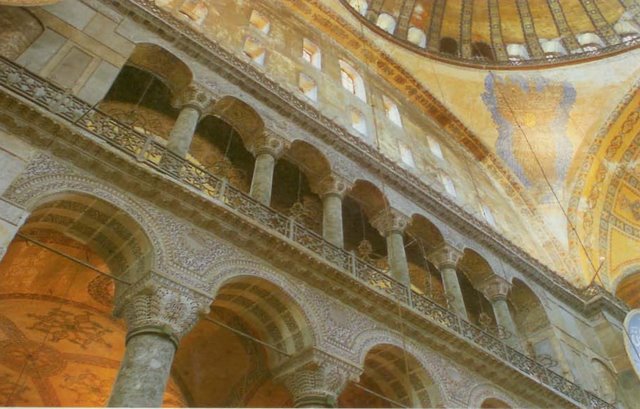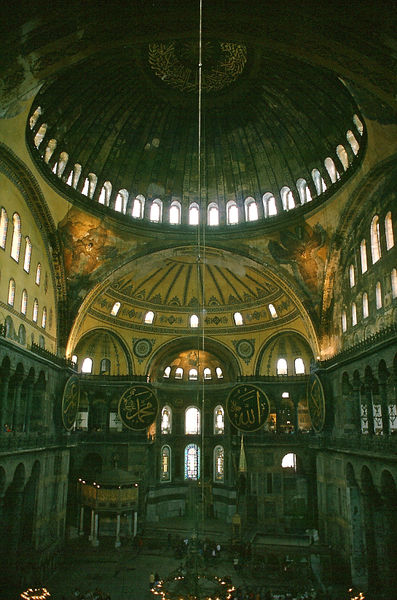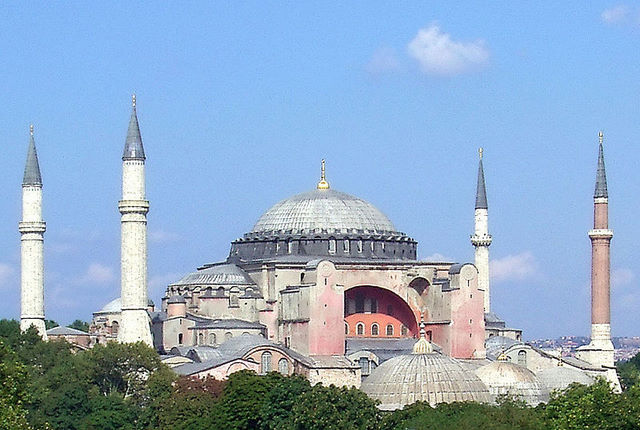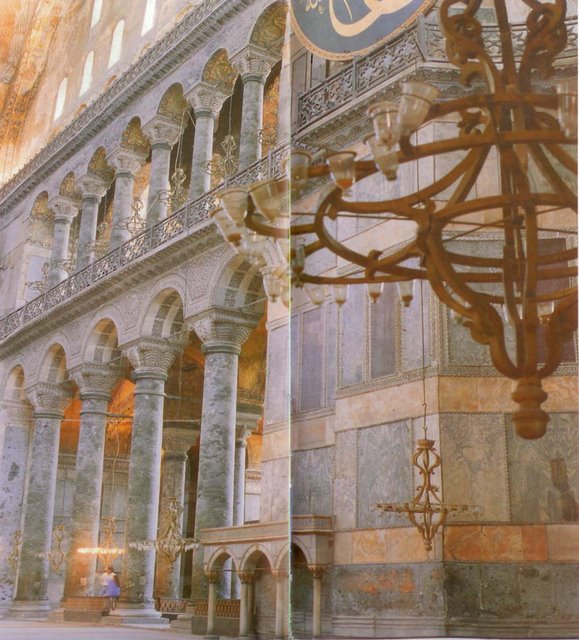Hagia Sophia, 532 CE
Located in Istanbul, Turkey, the Hagia Sophia is considered to be the epitome of Byzantine architecture. It was originally constructed as a church, beginning in 532, on the orders of the Emperor Justinian. At the opening in 537, Justinian arrived in his Victory chariot and said, “Thank God, for giving me the opportunity for constructing such a place of worship. Thanks be to God who made me worth to surpass even thee, O Solomon.”
Mosaic of the Imperial Door
Above the imperial gate on the west of Hagia Sophia, the mosaic shows Christ the Pantokrator the owner of the universe, frontally seated upon a splendid throne. The jeweled throne is similar to the throne of the Byzantine emperors. He raises his right hand in a gesture of blessing, and in his left hand he holds an open book inscribed in Greek with the words from St. John’s Bible- “Peace be with you. I am the Light of the World.”
Hagia Sophia 3
Hagia Sophia Museum Guide
Architecture
The vast, airy naos, or central basilica, with its technically complex system of vaults and semi-domes, culminates in a high central dome with a diameter of over 101 feet (31 meters) and a height of 160 feet (48.5 meters). This central dome was often interpreted by contemporary commentators as the dome of heaven itself. Its weight is carried by four great arches, which rest on a series of tympana and semi-domes, which in turn rest on smaller semi-domes and arcades. This complicated structural system was prone to problems- the first dome collapsed in 558, to be rebuilt in 562 to a greater height. Earthquakes and earth subsidence have also taken their toll on the building over the centuries, although the surviving main structure is essentially that which was first built between 532 and 537.
The interior of Hagia Sophia was paneled with costly colored marbles and ornamental stone inlays. Decorative marble columns were taken from ancient buildings and reused to support the interior arcades. Initially, the upper part of the building was minimally decorated in gold with a huge cross in a medallion at the summit of the dome. After the period of Iconoclasm (726–843), new figural mosaics were added, some of which have survived to the present day.
After Mehmed II’s conquest of the city in 1453, Hagia Sophia was converted to a mosque (Ayasofya Camii), which it remained until the fall of the Ottoman empire in the early twentieth century. A view of Hagia Sophia during the conquest is conveyed in a woodcut by Pieter Coecke van Aelst depicting the procession of Süleyman the Magnificent through the Hippodrome (28.85.7a). During this period, minarets were built around the perimeter of the building complex, Christian mosaic icons were covered with whitewash, and exterior buttresses were added for structural support. In 1934, the Turkish government secularized the building, converting it into a museum, and the original mosaics were restored.
Emma Wegner
Department of Medieval Art and The Cloisters, The Metropolitan Museum of Art
Heilbrunn Timeline of Art History- Hagia Sophia, 532–37
See also-









